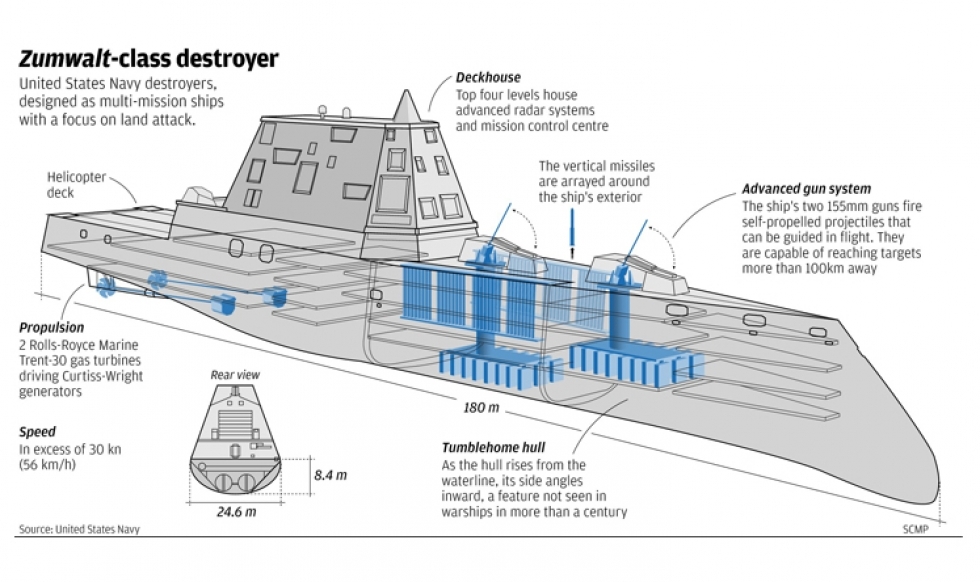Introduction: The mysterious depths of the ocean have long captivated the human imagination, holding untold treasures, resources, and the promise of groundbreaking discoveries. In our quest to explore and understand the underwater world, technological advancements have played a pivotal role. One such groundbreaking innovation, quantum sensing, is now poised to …
Read More »Revolutionizing Radiation Detection: Latest Technologies and Materials Developed to Combat Dirty Bombs and Nuclear Accidents
Radiation is a form of energy that is present in our environment and can have harmful effects on living organisms. Radiation threats come from a variety of sources, including nuclear power plants, medical facilities, and industrial facilities that use radioactive materials. These sources can release radiation into the environment, which …
Read More »Preventing Unnecessary Amputations: Early Detection and Effective Management
Amputation is a surgical procedure that involves the removal of a limb or part of a limb. There are several reasons why a person may undergo an amputation, including traumatic injury, disease, and complications from medical procedures. Trauma is one of the most common causes of amputation. Severe injury, such …
Read More »The MAGNUSS Project: Advancements in Autonomous Mine Countermeasure Technology
Mines, whether in the sea or on land, pose a significant threat to maritime security and the safety of personnel. Detecting and neutralizing these hidden dangers have long been a priority for naval forces worldwide. However, with the rapid advancement of technology, a new era of autonomous mine countermeasure systems …
Read More »How Sonar Systems Keep Ships and Submarines Safe: Detecting Mines and Tracking Stealthy Submarines
Introduction In the vast expanse of the world’s oceans, ships and submarines navigate through challenging waters, facing numerous hazards ranging from underwater mines to stealthy enemy submarines. To mitigate these dangers and ensure maritime safety, advanced sonar systems have become indispensable tools for naval forces worldwide. Sonar, short for Sound …
Read More »The USS Zumwalt: US Navy’s Largest Destroyer a Game Changer for Naval Warfare
Introduction: Naval warfare has seen remarkable technological advancements over the years, and one of the most significant additions to the United States Navy’s fleet is the USS Zumwalt (DDG-1000) class destroyer. As the largest and most technologically advanced destroyer in the US Navy, the USS Zumwalt represents a game-changer in …
Read More »Military Radars are critical sensors for national defense and security, from Land, Air, Naval to space operations
Introduction In an increasingly complex and unpredictable world, ensuring national defense and security is of paramount importance. Military radars have emerged as indispensable tools in safeguarding countries and their citizens from various threats across different operational domains. From land and air to naval and space operations, these sophisticated sensors play …
Read More »Eyes in the Sky: Balloons as a New Form of Intelligence Gathering
Introduction In the ever-evolving world of technology, intelligence gathering has seen remarkable advancements. From satellites to drones, we have witnessed a revolution in the way information is collected and analyzed. However, there is a new player in the sky that promises to revolutionize intelligence gathering further: balloons. Yes, you read …
Read More »Quantum Control: Unlocking the Power of the Quantum Realm
In the realm of quantum mechanics, where the laws of the subatomic world reign supreme, lies a fascinating technology known as quantum control. This groundbreaking concept revolves around the art of manipulating and regulating quantum systems, such as atoms, ions, and qubits, to achieve specific outcomes. Quantum control has emerged …
Read More »AI-Powered Patient-Provider Matching: Improving Health Outcomes for All
Introduction In today’s fast-paced and technology-driven world, artificial intelligence (AI) is revolutionizing various industries, and healthcare is no exception. One of the most promising applications of AI in healthcare is patient-provider matching, a process that pairs patients with the most suitable healthcare providers based on their individual needs and preferences. …
Read More » International Defense Security & Technology Your trusted Source for News, Research and Analysis
International Defense Security & Technology Your trusted Source for News, Research and Analysis




